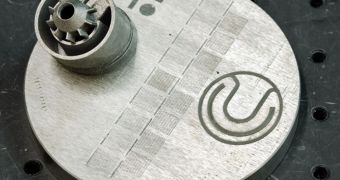General Electric engineers decided to start using three-dimensional printers for constructing complex jet engine components, such as for example fuel injectors. They say that the move will allow them to construct more solid, less expensive, less-work intensive components.
The company says that it currently takes engineers a long time to weld together the 20 pieces of metal that ensure a fuel injector provides the optimum mixture of air and fuel to an engine. But what if the components could be printed in one go, out of a single piece, by a 3D printer.
This technology has the ability to manufacture existing products more efficiently and cheaper, while at the same time improving their structure and resistance. A fuel injector, for example, needs to withstand extremely-high temperatures and impressive forces during standard operations.
According to GE representatives, the jet engine the company will roll out of the factory in 2012 will prove that 3D printing is indeed a mature technology that can be employed to create sensitive products.
GE research lab expert Prabhjot Singh says that the manufacturing technique, which constructs the piece one layer at a time, is also capable of producing components that are lighter, and therefore more fuel-efficient. By this approach, the engine's weight could decrease substantially.
Though the company wanted to use 3D printing exclusively for jet engines at first, “there's not a day we don't hear from one of the other divisions at GE interested in using this technology,” Singh says.
Advanced applications like aerospace and car manufacturing are apparently the most likely to benefit from 3D printing. In the future, it may be possible that this approach will replace most other technological processes in existence today.
Other groups researching 3D printers say that the devices could conceivably be scaled up to the size of a crane, constructing a house one layer at a time. It may even be possible – in a few decades – to construct an entire airplane from scratch through this approach, Technology Review reports.
One of the biggest advantages this method has is that it does not waste any material. When working with gold, platinum, titanium and other expensive or rare elements, this ability becomes absolutely essential.

 14 DAY TRIAL //
14 DAY TRIAL //